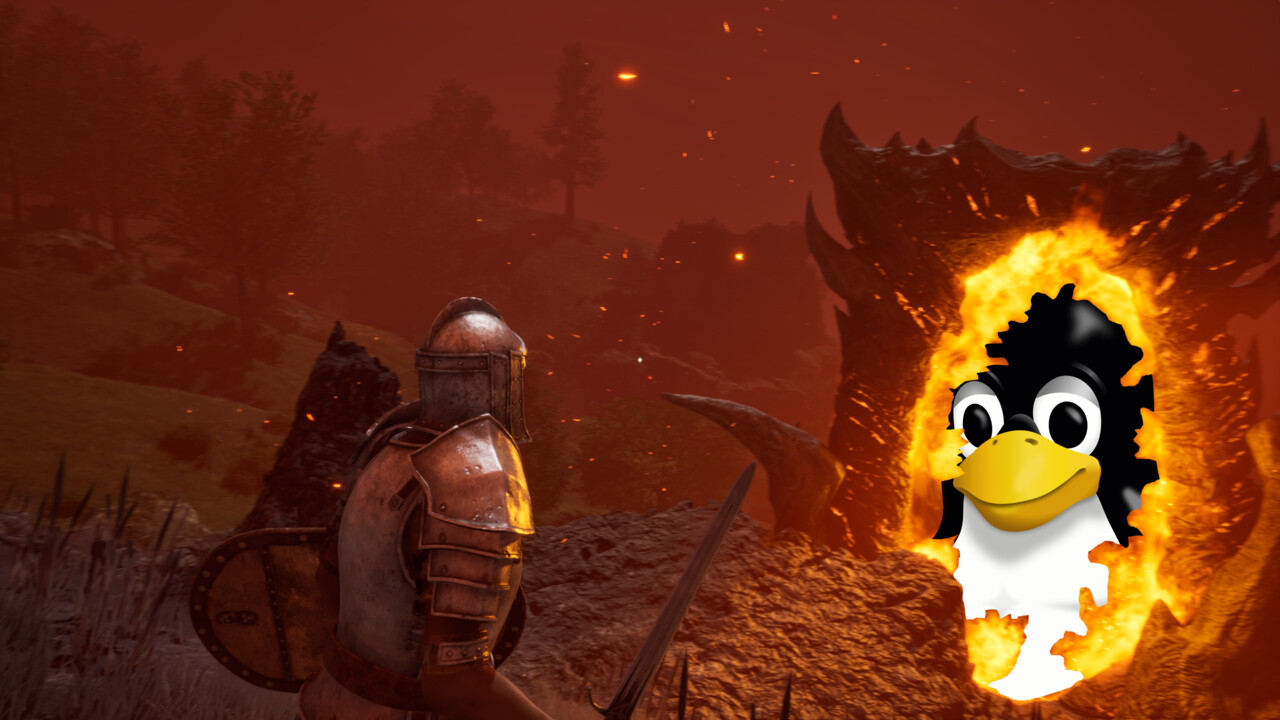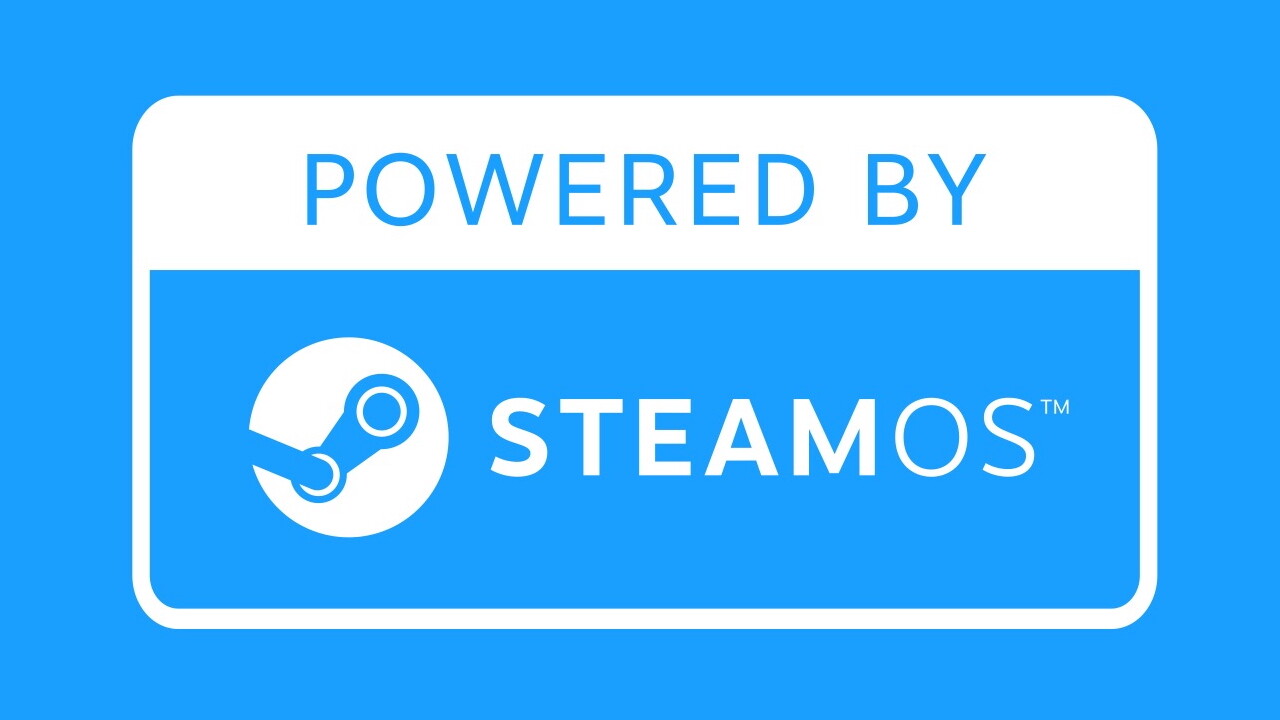Oblivion Remastered on Linux Test: Benchmarks with AMD, Intel, Nvidia, and the Steam Deck 109 Comments

Image: Larry Ewing, Simon Budig, Garrett Lesaf
The Elder Scrolls IV: Oblivion Remastered is not only a pleasant surprise on Windows, but also performs well on Linux in the test. The Windows level is reached in the benchmark with a Radeon RX. GeForce RTX runs fine, the Arc isn’t at all. The standard setting is too demanding on the Steam Deck. Benchmarks Content with AMD, Intel, Nvidia, and Steam Deck Linux Compatibility Exchange Test System and Reference Benchmarks and Linux Desktop Compatibility Benchmarks without RT Benchmarks Linux Desktop with RT Steam Deck Benchmarks Conclusion Conclusion
Linux Compatibility Ex Works
The Elder Scrolls IV: Oblivion Remastered is advertised directly on the Steam store page as verified for Steam Deck with Linux. A look at Protondb also reveals a “Platinum” rating for the title.
The Elder Scrolls IV: Oblivion Remastered is officially verified for Steam Deck.
 Test System and Reference Scene
Test System and Reference Scene
The heart of the test system is an AMD Ryzen 7 9800x3d running on an ASUS X670E-Pro WiFi. 64GB of DDR5-6000 with CL30 setting is available for RAM. An RX 9070 and an RX 7800 XT are used as AMD graphics cards. An RTX 5070 is used for NVIDIA, and Intel is represented by an Arch B580. On the software side, there is a current state of Arch Linux with Linux kernel 6.14.3, MESA for AMD and Intel in version 25.0.4, NVIDIA 570.144. KDE Plasma 6.3.4 is used as the desktop in Wayland mode. A 2560 × 1440 QHD monitor with 144 Hz is available for image output. The Steam Deck is the standard LCD model with SteamOS 3.6.24.
As a benchmark scene, the same 20-second test sequence in the “Heartlands” map section as in the Windows test is run through the scrolling Elder IV: Oblivion Remastered. As a result, the graphics cards are faced with a lot of foresight and vegetation.
The graphical details correspond to the Windows test and correspond to the ultra-similarity with shadows at High and DLSS/FSR. The Steam game, on the other hand, uses 1280×800 and various graphics settings are part of the test.
Benchmarks and Compatibility
Linux desktop benchmarks without rt
Starting with AMD, it turns out that, despite the compatibility layer in the form of Proton, Linux is on par with Windows in performance, and in detail, it’s even slightly better than the Redmond operating system. The Radeon RX 9070 demonstrates a close tie between Linux and Windows. The view from the predecessor RDNA3 is a bit more interesting. While the average FPs barely differ, the matter is already clearer for the low 1% FPs: Linux can offer a whopping 11% better FPS here and 57 fps rendered under Windows on Windows. As a result, Unreal Engine 5 gaming with the RX 7800 XT on Linux looks a bit smoother than the case on Windows.
With the NVIDIA RTX 5070, things look different. A total of 33% more frames per second are displayed on average under Windows. A look at the low frame rates shows even worse values: 38% fewer FPS than under Windows. In absolute terms, this means that the RTX card can achieve an average of around 60 fps under Linux, but the low frame rates drop to 38 fps. Without loading the graphics options, it’s therefore impossible to think about fluid gameplay. Even though the RTX 5070 is already difficult for Windows, despite high graphics settings, it manages to deliver most FPS, so you can get by without the settings.
At Intel, the question is quickly answered: Anyone with an Intel Battlemage GPU under Linux won’t be able to play Oblivion Remastered for the time being. The game simply refuses to launch. According to reports, the upcoming kernel 6.15 could fix this, but so far, it has only been a release candidate and is therefore not an option for the majority of players. As a result, additional tests have been distributed.
Linux Desktop Benchmarks with RT
Thanks to hardware lumens, The Elder Scrolls IV: Oblivion’s Unreal Engine 5 adaptation also offers demanding ray tracing. But can this be used sensibly on Linux?
Activating it on the RX 9070 reduces the FPS from just under 89 to just 54 fps. The otherwise fluid gameplay gives way to a slight jerk. On the other hand, the Radeon also generates over 70 fps with hardware ray tracing. The RX 9070’s low FPS under Windows corresponds to the average FPS under Linux. Interestingly, the performance drop in the case of the RX 7800 XT is significantly smaller. Windows only delivers a 16% increase, with 44 fps compared to 51 frames per second. In any case, hardware ray tracing is not a good choice. The low FPS, on the other hand, are the same up to the offspring.
NVIDIA’s RTX 5070 also struggles with ray tracing under Linux, but even catches up slightly in the raster comparison. Due to the general performance loss of NVIDIA cards under Linux in conjunction with DirectX-12 titles, more white space must be used to forget about using hardware ray tracing.
Benchmarks
When the game is first booted onto Steam, the system sets all graphics settings for the console’s performance accordingly. The “Low” preset is selected, the software lumens are set to “Low,” and Xess is enabled. The frame rate is automatically set to 30. Interestingly, the graphics settings to enable TSR as edge smoothing result in a reset of the graphics settings. The editorial team also covered this issue, with the rendering resolution set to the native desktop resolution.
Front-end stone positions are too demanding
Since most games with Steam deck compatibility use FSR 2 as the top level, there are also benchmarks using AMD’s large-scale method. Finally, there is also a performance overview of manually controlling all options to “Lowest.”
In the first comparison with TSR and native resolution, the game is unplayable. Only 16 photos on average make Oblivion look like a slideshow on the steamboat deck. Upscaling is mandatory. With the automatic resolution settings and especially the Xess-UpScaler, the game runs at 30 fps and is therefore quite playable on the handheld.
The low 17 FPS is noticeable in places, but overall, it depends a lot on the scene. Away from the reference sequence, there can be a slightly choppy feeling while playing. This is particularly noticeable when playing after leaving the sewer system and therefore at first glance in the open world. Here, the FPS often ranks around 25. Changing the FSR does not change the results; the values remain the same. Players have to adjust manually.
But it could be better: if the “low” settings are manually set to “lowest,” even Steam Deck generates an average of nearly 50 fps. More than enough for mobile gaming. But there’s a catch: the game partially forgets the graphics settings as soon as you call up the menu and change them. A fact that can hopefully be fixed by future patches.
Under the knife, however, one can say that the default settings are a bit too high; something like this should have been noticed in the Steam Deck check. Only the manual grip in the settings menu for a mostly liquid gaming experience remains.
Conclusion
Bethesda has brought a nice surprise to the market with The Elder Scrolls IV: Oblivion Remastered. And not only on Windows gaming PCs, but also on Linux.
Considering that a lot has happened in the Linux world since the original’s release 19 years ago, gaming is no longer a foreign word on the free operating system. And so, The Elder Scrolls IV: Oblivion Remastered Out-the-Box runs very well on a Linux desktop—if you’re using a Radeon graphics card. Without hardware ray tracing, frame rates are even slightly better than on Windows.
This doesn’t mean that Nvidia gamers won’t enjoy Linux. The title can also be played with a GeForce RTX, but potential buyers should be aware that this results in a performance loss of more than 30% compared to Windows. The game isn’t unplayable, but even an RTX 5070 only generates 60 frames on average.
With hardware ray tracing, however, things look different. Here, the performance drop is significant on AMD, falling below the liquid limit of 60 fps. At Nvidia, the intrusion isn’t too significant when activating hardware lumens and moves within the Windows test framework. Due to the general performance loss of the Nvidia card under Linux, which is Nvidia’s fault, not Linux, the RTX 5070 then finds itself alongside the RX 9070 in this discipline.
Anyone with a current Intel “Battlemage” graphics card will no longer be satisfied with Linux: the game won’t even start.
And what about Steam Bridge? The title can also be played on it, but checking Steam Bridge would have suggested better default settings. Without manual intervention in the graphics settings, it can be shaky in places.
Was this article interesting, helpful, or both? The editorial team welcomes any support from Techastuce Pro and deactivates ad blockers. Learn more about monitors based on the computer.
Topics: AMD Benchmarks Operating Systems Gaming Intel Linux Nvidia Open Source Radeon Role Playant Steam Steam Deck The Elder Scrolls Valve

A lifelong video game enthusiast, Julien reviews the latest releases and explores the technologies transforming the gaming world.


